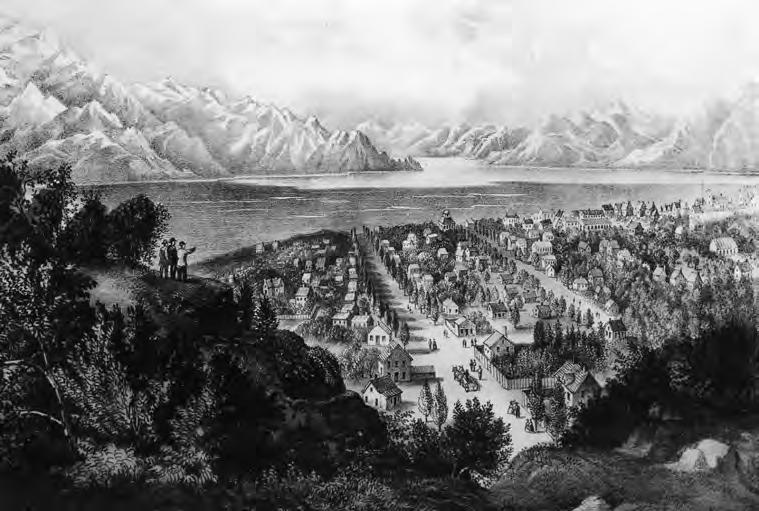
3 minute read
In This Issue
On the Way to Somewhere Else, the title of one of the books reviewed in this issue of the Utah Historical Quarterly ,is an appropriate theme for this last issue of 2006.Many of life’s challenges and changes come from the journeys we undertake. Journeys begin with the hope and expectation that the intended destination will be reached, but, given the vagaries of life, there is no guarantee.
Such was the case for Albert King Thurber. Infected with “gold fever” after the news of the discovery of gold in California reached the East Coast, Thurber left his native New England in March 1849 with a group of like stricken country men. Not all reached California. The original group, like many emigrant parties, fractured and splintered under the tremendous forces of hardship, individualism, disagreement, and contention. After Thurber arrived in the Salt Lake Valley, his conversion to Mormonism was quick and enduring. He remained in Utah to become a prominent settler, church leader, and politician during the next four decades of his life. Thurber’s journey westward in 1849,described in our first article, offers a vivid account of one man’s experience in setting out for one destination and discovering another.
After the initial gold rush of 1849, California continued to attract emigrants and none are more famous in Utah history than the members of the ill-fated Fancher party who were massacred at Mountain Meadows in southwestern Utah on September 11,1857. Our second article examines the confessions of fourteen participants in the massacre and provides a summary of what the confessions reveal about the tragic event.

Two sketches of Salt Lake City from the Utah State Historical Society Collection .The first dates from the early 1850s and was made by an artist who did not visit the Salt Lake Valley. The second, a more accurate portrayal of the city, was made in the late 1860s.
UTAH STATE HISTORICAL SOCIETY

UTAH STATE HISTORICAL SOCIETY
The death of one hundred twenty members of the Arkansas emigrant group at Mountain Meadows is an unfortunate yet unique episode in the story of emigrant travel through the region. Thousands of other nineteenth century emigrants passed through Utah without harm or difficulty on their way to someplace else. The written accounts of some of these travelers offer an interesting perspective on Salt Lake City during its formative first two decades. The contemporary accounts included in our third article describe the city’s buildings and landscape, trade, visits with Brigham Young, polygamy, Pioneer Day celebrations, and religious services.
Bruce Johnson arrived in Salt Lake City in 1890 and remained in Utah until 1907.An African American, possibly a slave, born in Little Rock, Arkansas, about 1850, Johnson mounted the stage of Utah politics to wield power and influence at a time when racism and discrimination blanketed America. His remarkable story and his impact on Utah are discussed in our final article for 2006.






